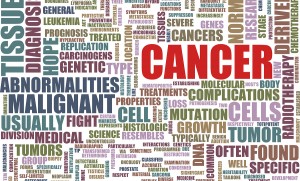(Akiit.com) Every year since 1976, the third Thursday in November marks the American Cancer Society’s Great American Smokeout, a day when smokers are encouraged to quit for the day and make a plan to quit for good.
“Some people are able to quit on their own, without the help of others or the use of medicines,” said Nadine Malpass, community engagement director for the American cancer Society of Charlotte area. “For many though, it can be extremely hard to break not only the physical addiction, but also the social and emotional ties to smoking. The most important step is the first one: making the decision to quit and we hope the Great American Smokeout gives smokers an opportunity to consider making a lifesaving change.”
Thanks to increased awareness, research, and other efforts, smoking rates have dropped dramatically in the past several decades, from about 42% of adults in 1965 to about 18% in 2012, the latest year for which numbers are available. Still, about 42 million adults currently smoke cigarettes, and tobacco remains a major killer, responsible for nearly one in five deaths in the United States, and at least 30% of all cancer deaths.
The first Great American Smokeout occurred on November 18, 1976, when the California Division of the American Cancer Society got nearly one million smokers to quit for the day. The Society took the program nationwide in 1977. The Smokeout has helped dramatically change Americans’ attitudes about smoking, helping bring about community programs and smoke-free laws that are now saving lives in many states. Many public places and work areas are now smoke-free, protecting non-smokers and helping encourage smokers who want to quit.
Today, smokers have more tools than ever to help quit smoking, but it remains one of the strongest addictions known. Smokers often have to make several quit attempts, using any of several tools, some proven, some not, before they find the method that works for them.
Among those tools smokers can consider:
- Nicotine replacement therapy
- Telephone and online based support and counseling
- Quit smoking programs and support groups
- Prescription drugs
Studies show 70% of smokers want to quit. Below is a timeline of the benefits of quitting:
- 20 minutes: Your heart rate and blood pressure drop.
- 12 hours: The carbon monoxide level in your blood drops to normal.
- 2 weeks to 3 months: circulation improves and lung function increases.
- 1 to 9 months: Coughing and shortness of breath decrease; cilia start to regain normal function in the lungs, increasing the ability to clean the lungs and reduce infection.
- 1 year: The excess risk of coronary heart disease is reduced by half
- 5 years: Risk of cancer of the mouth, throat, esophagus, and bladder are cut in half. Stroke risk can fall to that of a non-smoker after 2-5 years.
- 10 years: The risk of dying from lung cancer is about half that of a person who is still smoking. The risk of cancer of the larynx (voice box) and pancreas decreases.
- 15 years: The risk of coronary heart disease is that of a non-smoker’s.
“Quitting smoking also lowers the risk of diabetes, lets blood vessels work better, and helps the heart and lungs,” adds Nadine Malpass, ”Quitting while you are younger will reduce your health risks more, but quitting at any age can give back years of life that would be lost by continuing to smoke.”










Leave a Reply